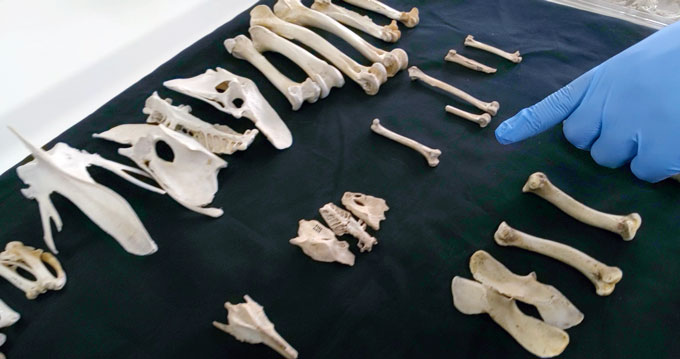Study Suggests Chickens Were Domesticated 3,500 Years Ago
It turns out that chicken and rice may have always gone together, from the birds’ initial domestication to tonight’s dinner. In two new studies, scientists lay out a potential story of chicken’s origins.

This poultry tale begins surprisingly recently in rice fields planted by Southeast Asian farmers around 3,500 years ago, zooarchaeologist Joris Peters and colleagues report. From there, the birds were transported westward not as food but as exotic or culturally revered creatures, the team suggests on June 6 in the Proceedings of the National Academy of Sciences.
“Cereal cultivation may have acted as a catalyst for chicken domestication,” says Peters, of the Ludwig Maximilian University of Munich.
The domesticated fowl then arrived in Mediterranean Europe no earlier than around 2,800 years ago, archaeologist Julia Best of Cardiff University in Wales and colleagues report on June 6 in Antiquity. The birds appeared in northwest Africa between 1,100 and 800 years ago, the team says.
Researchers have debated where and when chickens (Gallus gallus domesticus) originated for more than 50 years. India’s Indus Valley, northern China and Southeast Asia have all been touted as domestication centres. Proposed dates for chickens’ first appearance have mostly ranged from around 4,000 to 10,500 years ago.
A 2020 genetic study of modern chickens suggested that domestication occurred among Southeast Asian red jungle fowl. But DNA analyses, increasingly used to study animal domestication, couldn’t specify when domesticated chickens first appeared.
Using chicken remains previously excavated at more than 600 sites in 89 countries, Peters’ group determined whether the chicken bones had been found where they were originally buried by soil or, instead, had moved downward into older sediment over time and thus were younger than previously assumed.
After establishing the timing of chickens’ appearances at various sites, the researchers used historical references to chickens and data on subsistence strategies in each society to develop a scenario of the animals’ domestication and spread.
The new story begins in Southeast Asian rice fields. The earliest known chicken remains come from Ban Non-Wat, a dry rice–farming site in central Thailand that roughly dates to between 1650 B.C. and 1250 B.C. Dry rice farmers plant the crop on upland soil soaked by seasonal rains rather than in flooded fields or paddies. That would have made rice grains at Ban Non-Wat fair game for avian ancestors of chickens.
These fields attracted hungry wild birds called red jungle fowl. Red jungle fowl increasingly fed on rice grains, and probably grains of another cereal crop called millet, grown by regional farmers, Peters’ group speculates. A cultivated familiarity with people launched chicken domestication around 3,500 years ago, the researchers say.
Chickens did not arrive in central China, South Asia or Mesopotamian society in what’s now Iran and Iraq until nearly 3,000 years ago, the team estimates.
Peters and colleagues have for the first time assembled available evidence “into a fully coherent and plausible explanation of not only where and when, but also how and why chicken domestication happened,” says archaeologist Keith Dobney of the University of Sydney who did not participate in the new research.
But the new insights into chickens don’t end there. Using radiocarbon dating, Best’s group determined that 23 chicken bones from 16 sites in Eurasia and Africa were generally younger, in some cases by several thousand years, than previously thought. These bones had apparently settled into lower sediment layers over time, where they were found with items made by earlier human cultures.

Archaeological evidence indicates that chickens and rice cultivation spread across Asia and Africa in tandem, Peters’ group says. But rather than eating early chickens, people may have viewed them as special or sacred creatures.
At Ban Non-Wat and other early Southeast Asian sites, partial or whole skeletons of adult chickens were placed in human graves. That behaviour suggests chickens enjoyed some social or cultural significance, Peters says.
In Europe, several of the earliest chickens were buried alone or in human graves and showed no signs of having been butchered.
The expansion of the Roman Empire around 2,000 years ago prompted more widespread consumption of chicken and eggs, Best and colleagues say. In England, chickens were not eaten regularly until around 1,700 years ago, primarily at Roman-influenced urban and military sites.
Overall, about 700 to 800 years elapsed between the introduction of chickens in England and their acceptance as food, the researchers conclude. Similar lag times may have occurred at other sites where the birds were introduced.





